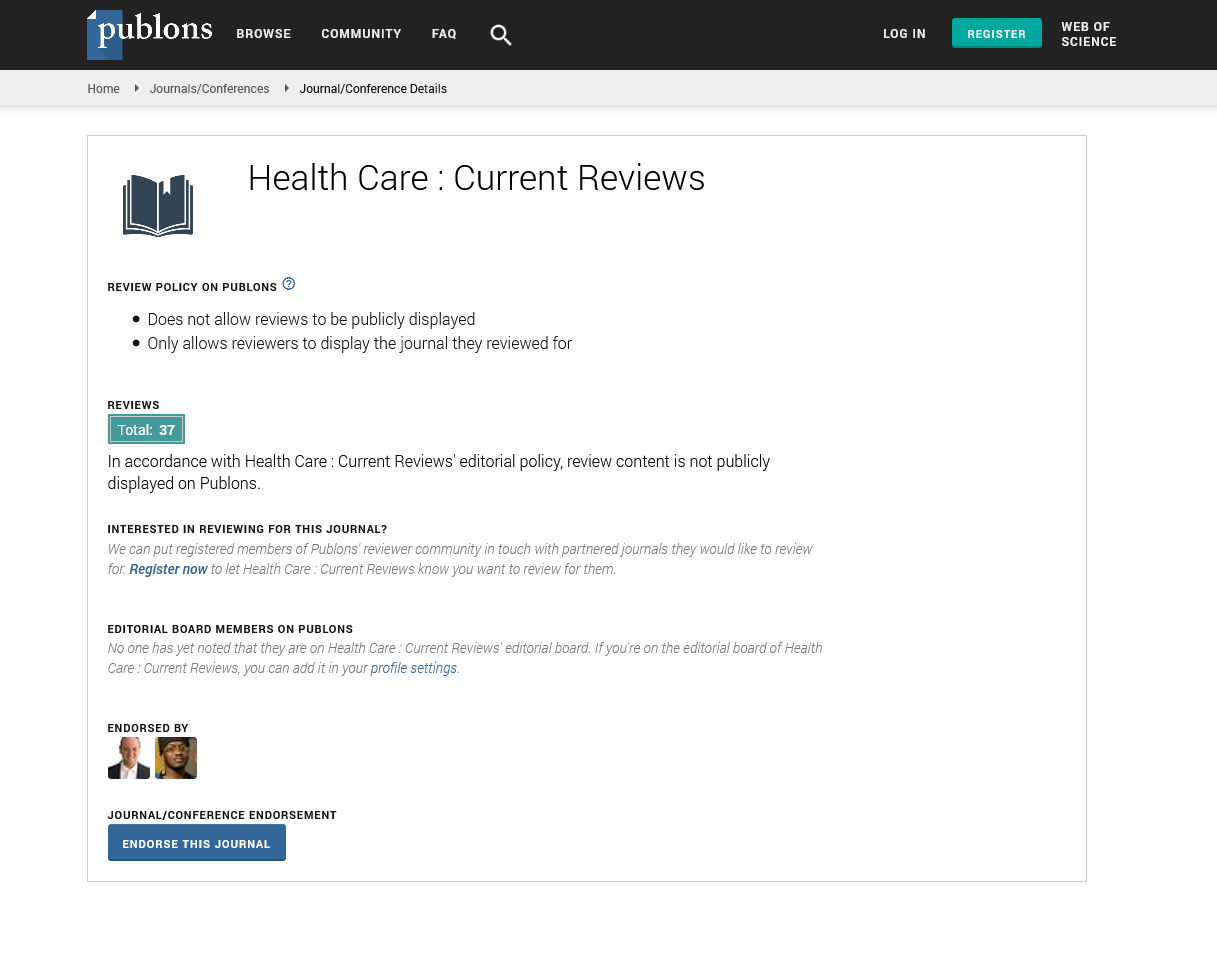Indexed In
- Open J Gate
- Academic Keys
- RefSeek
- Hamdard University
- EBSCO A-Z
- Publons
- Geneva Foundation for Medical Education and Research
- Google Scholar
Useful Links
Share This Page
Journal Flyer

Open Access Journals
- Agri and Aquaculture
- Biochemistry
- Bioinformatics & Systems Biology
- Business & Management
- Chemistry
- Clinical Sciences
- Engineering
- Food & Nutrition
- General Science
- Genetics & Molecular Biology
- Immunology & Microbiology
- Medical Sciences
- Neuroscience & Psychology
- Nursing & Health Care
- Pharmaceutical Sciences
Abstract
Engaging and Recruiting Underserviced Populations of Rural Victorian Women for Breast Health
Jelbart S, Crouch A and Tomnay JE
Abstract
Introduction: Evidence has indicated that there is little difference in knowledge between rural and urban women on the awareness of breast cancer risk and incidence, however, some studies have demonstrated that rural women are likely to report greater difficulty accessing services and treatment and are less likely to participate in regular breast care practice, such as breast self-examination or receiving a mammogram. Furthermore, evidence suggests that with an effective health behavioural change strategy, positive breast care practice can be achieved.
Method: With this in mind, we developed an initiative which employed a suite of strategies to improve access to breast screening and breast care programs for rural women and implemented this initiative across three different communities. We compared the demand that was created in each locale and the subsequent recruitment of rural women to the initiative, including the number of women attending mammography.
Results: Case A demonstrated the strength of the initial recruitment strategies in the context that these were rigorously and consistently applied which contributed to successful demand creation and subsequent recruitment of women to the program. Where any of these elements was not fully addressed, outcomes were adversely affected as demonstrated in Case B, where reduced capacity for recruitment support directly impacted the number of participants recruited and Case C, where failure to identify a champion, together with the collapse of the media program, resulted in no demand. Conclusion:
A clearly articulated and funded rural strategy for breast cancer detection is critical to the maintenance of breast health for rural women. Independent of access in metropolitan areas, maintaining resources and specific initiatives for recruiting under-screened rural and remote women is crucial. Research about the effectiveness and sustainability of population-based breast screening programs should continue, but should also include a clear, specific and stand-alone rural focus.

